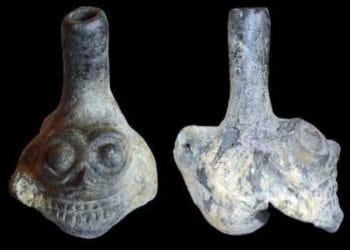In what archaeologists are hailing as a “once-in-a-lifetime discovery,” an excavation alongside the new leisure center at Grange Paddocks in Bishop’s Stortford, where a 3G artificial sports pitch is set to be installed by the East Herts Council this summer, has revealed an astonishing insight into Roman history.

The project, led by Oxford Archaeology project officer Neal Mason, has uncovered a wealth of archaeological treasures that have transformed our understanding of this Roman site.
Mason stated, “What makes the site remarkable is that it had revealed everything you could possibly hope for from a Roman site.” The excavation has uncovered a range of artifacts, including graves, a section of Stane Street (a Roman road), and even a pagan shrine, providing a comprehensive view of life during this period.
The excavation, which began in February and involved a team of up to 30 archaeologists, reveals a site that may have served as a transport interchange, akin to a Roman-era service station like Birchanger Green on the M11. This site may have also given rise to a “new town” that developed around it.

One of the most striking findings at the site is a cemetery located closest to the riverside path from Grange Paddocks to Sworder’s Field, boasting 87 graves. These graves, oriented east to west, indicate a Christian burial tradition, possibly dating from the final century of Roman occupation. This belief is supported by the absence of grave goods and the discovery of nails, suggesting that some individuals were buried in wooden coffins.
The excavation has revealed significant variations in the conditions of the graves, with some appearing to be empty due to severe degradation, while others house substantial numbers of bones and almost intact skeletons. These differences in grave preservation are still a subject of ongoing research.
To further unveil the secrets of this Roman cemetery and the site as a whole, months of testing and analysis, including isotope identification of teeth to trace migration and cultural affinity, will be necessary. Each grave has been extensively photographed to create 2D or 3D digital models, a process known as photogrammetry.
Just days before a guided tour for residents on April 23, the diggers found evidence of an earlier, more ad hoc death ritual – a cremation, signified by the discovery of small fragments of burnt bone.
The site also offers insight into its military importance. A building found within the site, likely a warehouse, was constructed in a Germanic style with a series of cellars. It is theorized that this structure could have been built by regional auxiliaries or veterans who retired after 20 years of service.

Further evidence of military activity includes the discovery of a hipposandal, a precursor to the horseshoe, and a “Roman landmine” known as a caltrop, a spiked metal device designed to disable horses and their riders.
Analysis of soil from trenches may reveal evidence of metal forging and other industrial processes at this site. Additionally, it is suggested that the site served as an essential trade hub and included a large enclosure for livestock, as indicated by the numerous animal remains.
The extensive presence of pottery at the site offers a glimpse into Roman daily life, as pottery was crucial to them, akin to the role plastic plays in contemporary society.
The site also yielded hundreds of coins dating from various periods of the Roman conquest, including an early discovery from the reign of Emperor Nero, who ruled from AD 54 to AD 68.
The excavation also revealed a metalled side road, a section of Stane Street with visible cobbles, and a building that is thought to be a roadside shrine.
While it is not definitively proven to be a pagan shrine, it shares many similarities with such structures, including its thatched construction within a palisade.

Neal Mason states, “We’ve had Roman experts visit and they’re sure it’s a shrine or a mausoleum – it’s far too small to be a house.”
The discoveries at Grange Paddocks in Bishop’s Stortford have provided a remarkable glimpse into the multifaceted history of the site. As the dig concludes and preparations for the all-weather sports pitch begin, Mason reflects, “From the 1st-century road to the 5th-century cemetery and with religious and military use, this site has many different layers and it just keeps giving. It’s been brilliant.”
The artifacts and findings, along with Oxford Archaeology’s analysis and conclusions, will eventually find a permanent home at the Bishop’s Stortford Museum. Plans are also in place to add an information board to the gym and pool building to educate visitors about the pitch site’s history and the remarkable discoveries made before the new leisure center was constructed.

This extraordinary excavation at Grange Paddocks reminds us that Bishop’s Stortford’s history is rich and multifaceted, with layers of human activity spanning centuries. It serves as a testament to the enduring history of the region and its vital role in the Roman era.
For residents and history enthusiasts alike, this discovery offers an incredible window into the past and the people who once called Bishop’s Stortford home. It underscores the fact that we are not the first inhabitants of this land, highlighting the continuity of human history and civilization. — Bishop’s Stortford Independent.




























